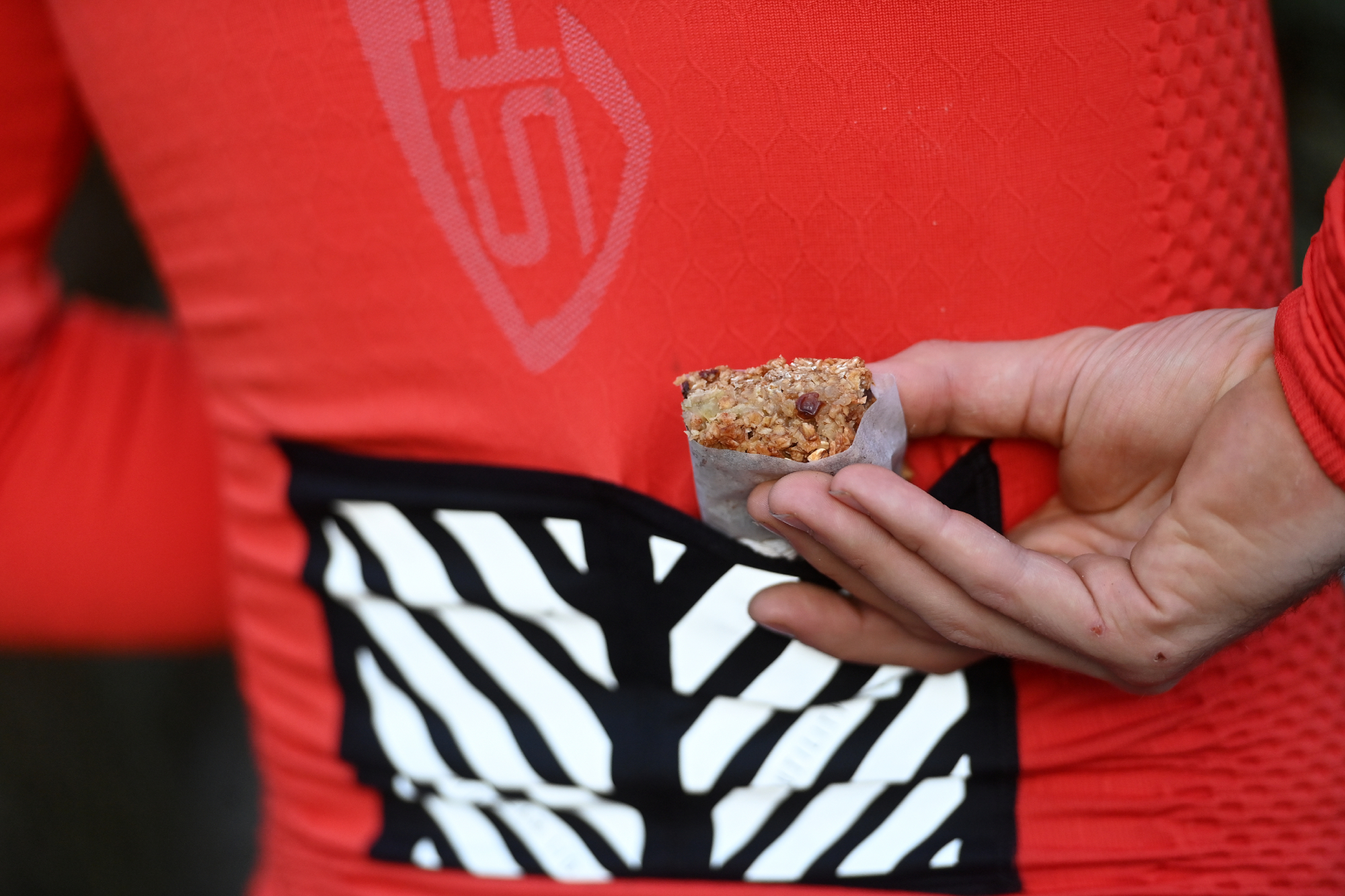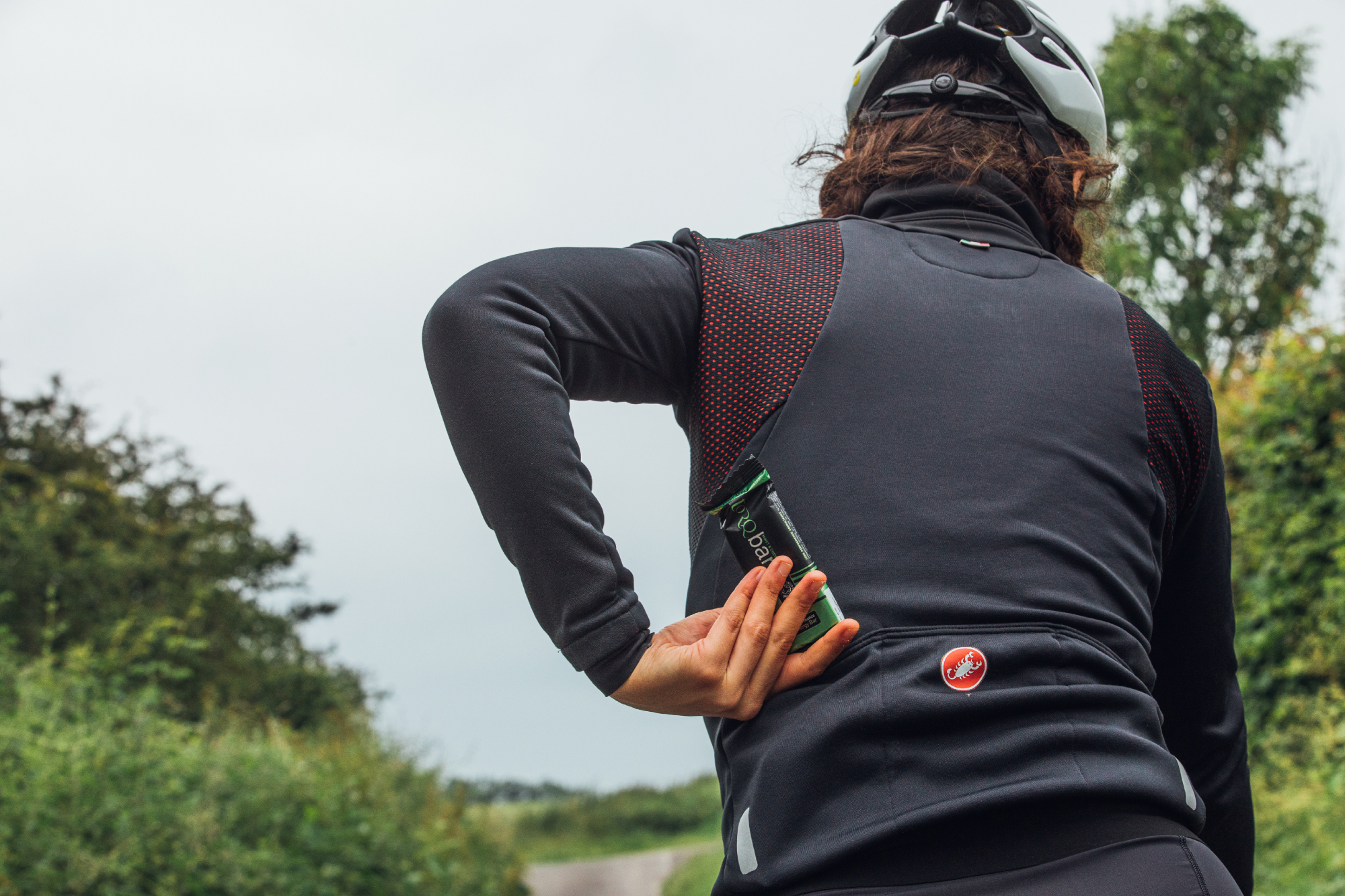
Sports nutrition has come a long way since the early 1900s, when riders in the Tour de France would stop at pubs and drink beer to sustain themselves during the race. Today, the world of endurance fuelling can be a complex one to sift through with so much information about carbohydrate intake, special diets, and additives in food readily available.
When it comes down to it, cyclists in particular tend to need sports nutrition rich in carbohydrates as the body burns through glycogen stores to power a cyclist across the miles.
Carbohydrates are not the only thing cyclists should be concerned about when selecting a cycling nutrition method. Food additives such as colorings and preservatives as well as the types of carbohydrate sources are top of mind for many endurance nutrition companies today as they create recipes they claim will fuel athletes to success.
The All-Natural Approach

One brand that takes an all-natural approach is FastFood, which was launched in early 2023 by Adam Melonas, an Ironman triathlete and globally renowned chef.
“Back when I started Unreal, I imagined what a world could be like where a chef embraced food science,” Melonas says. “After the launch of unreal, I started Chew [Innovation Lab, a food innovation lab based in Boston], and for the past nine-and-a-half years, we’ve had a team of scientists, chefs, and marketers working to make commercialized food delicious and ‘real.’”
The lockdown of the Covid-19 pandemic caused Melonas to try his hand at training for triathlon after decades as a cyclist. As he was training, his mind was at work, trying to come up with the best possible sports fuel after being unimpressed with the market’s current offerings.
“I was taken aback by the prevalence of artificial ingredients in [endurance fuel],” Melonas says. “I presumed that people who pursue endurance sports at the highest level likely over-index on natural and healthy food day-to-day, but are being asked to sacrifice those standards when it comes to sports nutrition.”
Melonas shares that he also experienced his own rollercoaster of “spiking and crashing” when using other sports nutrition products and simply wanted to “feel good” when fueling during his long training sessions.
Being the chef and food scientist that he is, Melonas took this feedback to his team at Chew to see how they could improve endurance fuel.
“I told my team we have to focus on performance first,” Melonas says. “We need to create the highest performing fuel product we can possibly create.”
After two-and-a-half years of testing and trialing, the team released their galactose-, glucose-, and fructose-based formula to the endurance sports world.
“In order to avoid this pattern of spiking and crashing, we needed to find a carbohydrate that provided the blood sugar stability athletes craved over training and racing,” Melonas says. “Our research showed that the trio of glucose, galactose, and fructose provided the most stable fueling profile over long training sessions.”

Galactose operates by moving to the liver once consumed and creating fresh glycogen, which in turns helps keep blood sugar levels relatively stable. Through continued testing at Chew, Melonas and his team homed in on using glucose, galactose, and fructose as their main carbohydrate sources.
“A huge reason we chose galactose is because there are very few, if any, known sensitivities to it,” Melonas says. “The upper limits on consuming grams of galactose are very high.”
Once Melonas and his team created their carbohydrate trio, they focused on making their product all-natural, down to the colorings and lack of preservatives.
“We said that everything in FastFood had to be in there for performance,” Melonas says. “Everything in FastFood is in there for the athlete - no artificial colorings, preservatives, or emulsifiers, because in our minds, those aren’t there for performance.”
Instead of leveraging artificial preservatives, FastFood uses heat and pressure to create safe, preserved products - and their energy gels have a jam-like texture which harkens to a similar process used to preserve jams and jellies.
In addition, Melonas wanted everything in FastFood to be “recognizable” to the body and not introduce anything foreign that could cause sensitivities to occur.
“FastFood is on a mission to educate athletes about what good sports nutrition should taste and feel like,” Melonas says. “We want people to understand how many grams of carbohydrates they should consume, how they should feel when they consume sports nutrition and what to expect. We want to be present in that education cycle.”
Although FastFood only recently launched, they are the official nutrition partner of the Human Powered Health elite cycling team.
“The galactose formula ensures our riders’ glycogen stores are topped off and ready to go,'' Team Nutritionist Mathias Fluit says. “It is noticeable that FastFood is led by people who are used to fueling during long efforts. This is reflected in the flavor and mouth-feel of their products.”
A Tried-And-True Method

On the other side of the all-natural coin is Gu Energy, or “Gu” for short, a longstanding sports nutrition company founded in 1991.
Gu Energy’s products have long been used by cyclists such as Caleb Swartz and triathletes such as four-time Ironman World Champion Mirinda Carfrae. Clearly, Gu has a winning formula without needing to be all-natural with respect to its ingredients.
Roxanne Vogel is Gu’s nutrition and performance manager and has been with the company for six years.
“I help to create Gu’s products as well as dive into anything education- or science-related with Gu,” Vogel says. “I also work with our sponsored athletes to help them plan their nutrition strategies and learn more about their sports nutrition needs.”
Gu leverages two carbohydrate sources in their formula: maltodextrin and fructose.
Vogel explains how Gu arrived at this recipe for success: “When we first created the recipe we have now at Gu, we looked at the current sports nutrition science which said that two carb sources are better than one, because the body is better able to utilize two sources than large amounts of one source.”
She went on to share that maltodextrin is “basically a bunch of glucose units linked together, like cars on a train,” which helps increase the rate of gastric emptying of carbohydrates from the stomach to the small intestine, decreasing the likelihood of gastric distress.

On the fructose front, Vogel explains that fructose takes longer to digest, which gives a more sustained release of energy.
“Maltodextrin and fructose work together really nicely,” Vogel says. “They allow you to also increase the amount of carbohydrate you can use across your race or training day.”
From a preservatives standpoint, Gu leverages two in their products: sodium benzoate and potassium sorbate.
“Both preservatives have been used in our food supply for decades, and sodium benzoate was the first preservative to be approved by the [Food and Drug Administration in the U.S.A.],” Vogel says. “These preservatives are very safe and are used widely throughout our daily food already.”
Vogel explained that Gu uses “very, very, very tiny amounts” of both and leverages them for athlete safety. Vogel shares that she has not experienced athlete feedback describing either preservative as being the direct cause of GI (gastrointestinal) distress for an athlete.
Both preservatives are legal substances in the case of the World Anti Doping Agency (WADA).
“We use both preservatives to protect the consumer and the athlete - to make sure our products last long, have a good shelf life, and are not going to make anyone sick,” she says.
Vogel made the comparison that if an athlete consumes Coca-Cola or another soda during a race or training day, they’re likely consuming more artificial preservatives and colorings from that beverage than a Gu product. If an athlete is really concerned about what they’re consuming, they should think holistically about all they’re intaking during a session or competition.
Gu does not use artificial colorings in their products and relies on fruit and vegetable juices and even spices like turmeric to color their nutrition.
A Sports Nutritionist Weighs In
“Endurance athletes are obviously doing longer training sessions and races, and during those sessions, they start to dip into the carbohydrate source naturally stored in your body, which is glycogen,” says Stevie Smith, a veteran, brand-agnostic registered dietitian and sports nutritionist based in Buffalo, New York.
“If you don’t take in carbohydrates during a long session and also deplete your glycogen stores, you start to break down fat or protein, which are less efficient and accessible energy sources.”
The result of this knowledge is that most, if not all, sports nutrition products designed for in-race fueling use carbohydrates as their main source of calories.
Smith went on to explain that the reason that most endurance nutrition fuel sources use multiple carbohydrate sources, like galactose and glucose or maltodextrin and fructose, is because the body can only handle so much of one carbohydrate source at a time.
“Imagine there is one major highway into a big city and only one way to get into that city from that highway,” Smith explains. “That highway would get jammed up pretty quickly. Same goes for using one carb source for your body. Using just one source jams up your body’s ability to process that one source effectively, which can lead to GI distress.”
Typically, a human body can only process about 60 grams of one carbohydrate source an hour, but new research is showing that a human body can process multiple sources of carbohydrates in the range of 100 - 130 grams per hour.
This is why both FastFood and Gu Energy leverage multiple naturally-occurring carbohydrates in their recipes - it helps athletes absorb and use as many carbs as possible from varied sources.
On a preservatives and colorings side, Smith suggests that athletes take care of other essential habits first before worrying about being “all-natural”.
“I think too many athletes worry about being all-natural - everything in moderation is my motto,” Smith says. “Obsessing over ‘all-natural’ or ‘clean eating’ can turn into disordered eating and there are so many other habits we should be focusing on first - sleeping enough, fuelling enough outside of workouts, staying hydrated, getting a variety of plants and proteins in our diet.”
Smith says that there are outliers, like if an athlete is eating many processed foods and consuming too many preservatives or artificial elements in their diet, then it may be worth exploring how to limit excess of both in their sports nutrition plan.
When it comes to finding what sports nutrition works for an individual, Smith says to “practice, practice, practice.”
“Start with small amounts of one fuel source, start trying different flavors, different textures,” Smith advises. “Gels have different viscosities, mouth-feel, and effects on each individual. Commit to testing and practicing different nutrition options in training so it’s not a guessing game come race day.”
Every athlete is unique, as are their fuelling needs. Be sure to consult with a sports nutritionist before going all-in on any one dogma for your nutrition plan - be prepared to be flexible and listen to your body, not just common nutrition tropes or marketing ploys.







